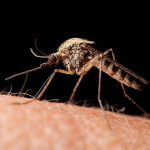
While vast quantities of peels from the aloe vera plant are thrown out every year as agricultural waste, this natural ingredient has potential to be a powerful insecticide, new research suggests. “It’s likely that millions of tons of aloe peels are disposed of globally every year,” said principal investigator Debasish Bandyopadhyay, from the University of Texas Rio Grande Valley. “We wanted to find a way to add value and make them useful.” The plant’s rinds can naturally ward off bugs because of several bioactive compounds found in extracts from the peels. The researchers will present their results this week at the fall meeting of the American Chemical Society, held online and in San Francisco. Bandyopadhyay noticed when he was visiting a local aloe vera production center, that insects left the aloe leaves alone, even as they attacked the leaves of other plants. He asked the CEO of the company if he could take the rinds back to his lab. While some home gardeners have begun to use aloe gel as an ingredient in natural pesticides, these recipes don’t always include the peels. Currently, aloe peels are typically used to create biomass to improve soil quality at aloe farms. However, this rotting agricultural waste can release methane and other greenhouse gases into the atmosphere, contributing to global climate change. Conversely, recycling the peels to develop a… read on > read on >


















